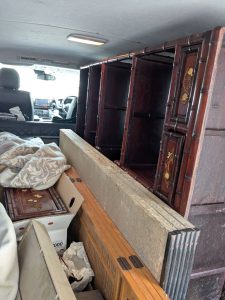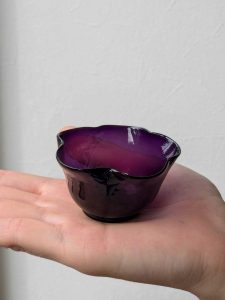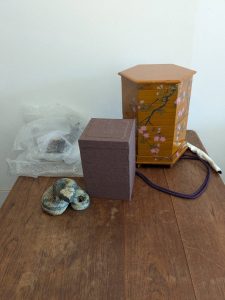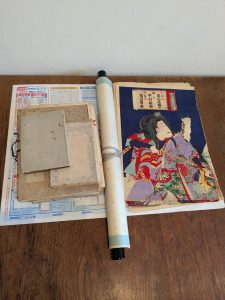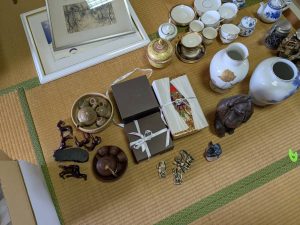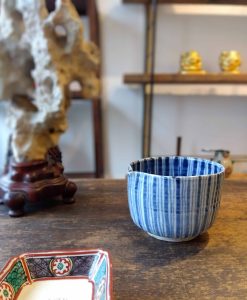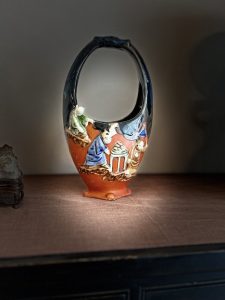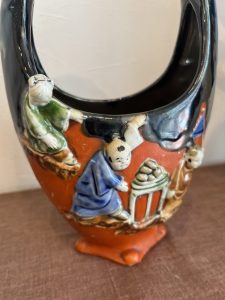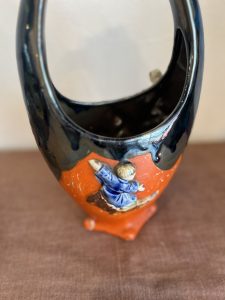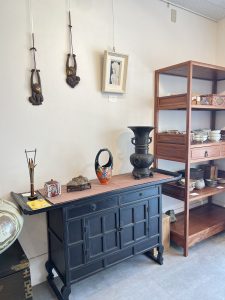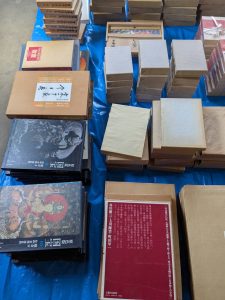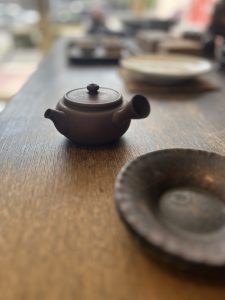
普段あまり冷たい飲み物は飲まないのですが、夏になると冷たくて甘い抹茶ドリンクを無性に飲みたくなります。抹茶の苦味と香りが気分をシャキッとさせてくれます。
今タイなどの暑い国では甘くて体を冷やしてくれる抹茶スイーツが爆発的な人気で、特にバンコクでは抹茶スイーツ専門店がコーヒー専門店を凌ぐ勢いで増えているそうです。
日本ではペットボトルのお茶の種類が豊富になるにつれ、急須でお茶を飲む人がここ10年で3割ほど減少しているという報告もあります。若い人などはそもそも急須を持っていない人も多いとか。
国内の茶葉の消費が減る一方で、海外での人気が高まっており輸出量が急激に伸びています。抹茶は茶葉を粉にして飲むので、カテキンやテアニン、ビタミンEや食物繊維などの栄養素を全て摂取できるとして健康志向の高い人々の興味を集めているのだとか。
コーヒーよりもカフェインの効きが緩やかで長く効果が続くそうで、体にも優しいイメージがあり子供でも飲めるのが人気の要因でもあるようです。
北米地域では健康志向の高まりにより抹茶はスーパーフードとして捉えられ、ヨーロッパでは日本文化への興味から茶道教室が盛況だとか。海外で抹茶がそこまでの人気になっているとは知りませんでした。
2024年の海外輸出量は8798トンだったそうですが、2030年には1万5000トンになるという予想が出ています。お茶農家には嬉しい悲鳴なのではと思っていましたら、そんなに簡単なことではないようです。
先ほども書きましたが、日本国内ではお茶の消費量が減り新茶の価格が下がり続けていたため、お茶農家離れが進んでいました。さらに農家の高齢化により栽培面積は減少の一途をたどっていたのだそうです。そこへ海外の抹茶ブームによる需要が高まり「抹茶クライシス」が起こり、値段が高騰しているのだとか。
茶道で使用される抹茶は「碾茶(てんちゃ)」という茶葉から作られ京都、愛知、静岡、奈良、福岡などで栽培されています。玉露と同じく茶園に覆いをかけて育てられ、手摘みした後に乾燥させ、茎や葉脈を取り除きます。そのあと臼で細かく挽いていくのですが、挽くスピードが速いと熱が発生し茶葉が劣化するそうで、ゆっくりしか挽けず、これもまた生産が追い付かない原因となっています。
スイーツなどに使われる抹茶は加工用抹茶と呼ばれるものも多く、碾茶ではなく別の茶葉で別の方法で作られているものもあるそうです。
日本で初めて抹茶を使ったデザートを作ったのは、和歌山県でお茶屋さんとして150年の歴史を持つ「玉林園」とされています。1958年に抹茶入りのソフトクリームを開発し、今でも和歌山市民のソウルフードとなっています。
そして全国的に抹茶スイーツ人気を高めたのは、やはり1996年に発売されたハーゲンダッツの「グリーンティー」だといわれています。日本で7年の歳月をかけて開発され今では世界中で定番となっています。ハーゲンダッツは「家庭にある素材で作る」という理念を掲げているため、シンプルな素材のみで抹茶の苦味を生かしつつミルクの濃厚さとのバランスをとることが難しかったようです。また時間が経つと抹茶の鮮やかな緑がくすんでしまうという難題が起こったため、研究者たちはまず抹茶を知ることから始めたとか。
そして7年の研究の末に、初摘み茶葉を使用したお茶の苦味がしっかりと残る爽やかで濃厚なアイスが生まれました。カップや蓋は他のフレーバーとは違い光を遮るものが使用され、加工の途中でも抹茶を扱う際には暗闇の中で作業を行い、光や熱を加えないようにしているのだそうです。
なんだか頭の中が抹茶アイスで一杯になってきました。帰りに買ってしまいそうです。
抹茶人気に伴い、海外から茶筅などの注文も増えており、伝統的な茶筅作りで有名な奈良高山の「翠華園」でも海外向けに飾りを施した茶筅を輸出販売しています。全て手作業で作る工程に外国の方々は驚嘆するそうです。
国内だけでは衰退してしまいそうな伝統技術が海外の人により復活し、受け継がれていくのは大変有難くもありますが、少々複雑な気持ちにもなります。
それでは、また次の機会に。(スタッフH)
I don’t usually drink cold drinks, but in the summer, I have an irresistible craving for a cold, sweet matcha drink. The bitterness and aroma of matcha tea makes me feel refreshed.
In hot countries such as Thailand, matcha sweets, which are sweet and cooling to the body, are exploding in popularity, especially in Bangkok, where the number of stores specializing in matcha sweets is said to be growing faster than that of coffee shops.
In Japan, it is reported that the number of people who drink tea with a teapot has decreased by about 30% in the past 10 years as the variety of bottled teas has become more abundant. Many young people, for example, do not even own a kyusu in the first place.
While domestic consumption of tea leaves is decreasing, its popularity is increasing overseas, and exports are growing rapidly. Since matcha is made from powdered tea leaves, it is attracting the interest of health-conscious people as a source of all nutrients, including catechins, theanine, vitamin E, and dietary fiber.
The caffeine effect is said to be slower and lasts longer than coffee, and its popularity is also due to its health-friendly image and the fact that even children can drink it.
In North America, matcha is considered a superfood due to growing health consciousness, and in Europe, tea ceremony classes are thriving due to interest in Japanese culture. I had no idea that matcha had become so popular overseas.
I heard that the amount of tea exported overseas in 2024 was 8,798 tons, and it is expected to reach 15,000 tons by 2030. I thought it would be a great news for tea farmers, but it seems that it is not that easy.
As I mentioned earlier, tea consumption in Japan has been declining and the price of new tea has been falling, so tea farmers have been leaving the industry. In addition, the cultivation area was decreasing due to the aging of farmers. Then, the demand for matcha from overseas increased due to the matcha boom, causing a “matcha crisis,” and the price of matcha has skyrocketed.
Matcha used in the tea ceremony is made from “tencha” tea leaves, which are grown in Kyoto, Aichi, Shizuoka, Nara, Fukuoka, and other regions. Like gyokuro, it is grown in tea gardens under cover, hand-picked, dried, and stripped of stems and veins. The tea leaves are then finely ground in a mortar, but if the grinding speed is too fast, heat is generated and the tea leaves deteriorate, so the grinding can only be done slowly, which is another reason why production cannot keep up.
Matcha used in sweets is often called “processed matcha,” and is made using a different method with different tea leaves instead of tencha.
Gyokurinen, a tea shop with a 150-year history in Wakayama Prefecture, is believed to be the first company in Japan to create a dessert using matcha green tea. 1958 saw the development of a soft-serve ice cream containing matcha green tea, which is still a soul food for Wakayama citizens.
It is also said that it was Häagen-Dazs’ “Green Tea” released in 1996 that made matcha sweets popular nationwide. It took seven years to develop in Japan and is now a worldwide standard. Because Haagen-Dazs’ philosophy is to “make it with ingredients you can find at home,” it was difficult to balance the richness of the milk with the bitterness of the matcha using only simple ingredients. The researchers began by getting to know matcha first, because the bright green color of matcha tends to dull over time.
After seven years of research, they created a refreshing, rich ice cream that retains the bitterness of tea made from the first harvest of tea leaves. Unlike other flavors, the cups and lids are made to block out light, and even during processing, they work in the dark when handling the matcha to avoid adding light or heat.
My head is kind of full of matcha ice cream. I think I will buy some on my way home.
With the popularity of matcha, orders for tea whisks and other products from overseas have been increasing. Suikaen in Takayama, Nara, which is famous for making traditional tea whisks, is also exporting and selling decorated tea whisks for overseas customers. Foreigners are said to be amazed at the process of making all the work by hand.
It is a great honor to see the revival of this traditional technique, which might otherwise have faded away in Japan alone, being passed on to the next generation by people overseas, but it also gives me mixed feelings.
I hope to see you again next time. (Staff H)
*******************
ご実家の整理やお片付けなどをされている方のご相談などが多くございます。
お片付けなどくれぐれもご無理のないようになさってくださいませ。
風光舎では古美術品や骨董品の他にも絵画や宝石、趣味のお品など様々なジャンルのものを買受しております。
お片付けをされていて、こういうものでもいいのかしらと迷われているものでも、どうぞお気軽にご相談下さいませ。
また風光舎は、出張買取も強化しております。ご近所はもちろん、愛知県内、岐阜県、三重県その他の県へも出張いたします。
まずは、お電話お待ちしております。
愛知県名古屋市千種区姫池通
骨董 買取【古美術 風光舎 名古屋店】
TEL052(734)8444
10:00-18:00 OPEN
